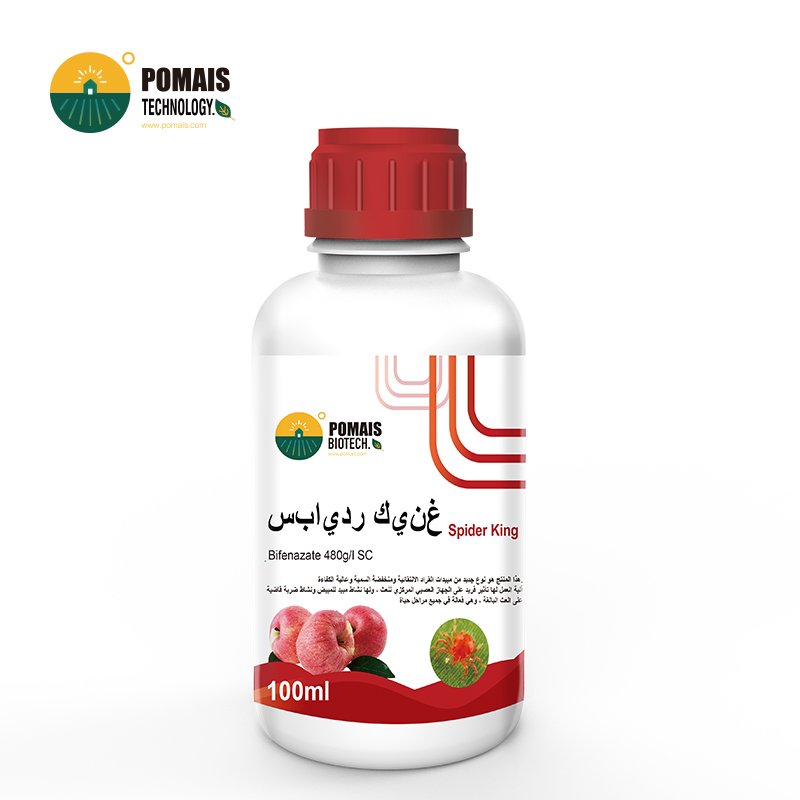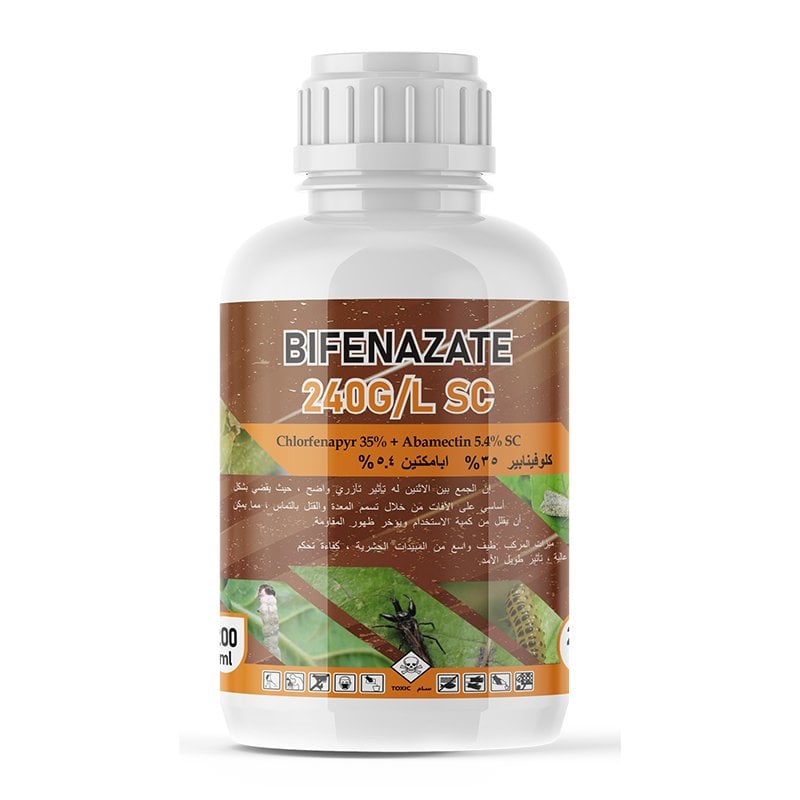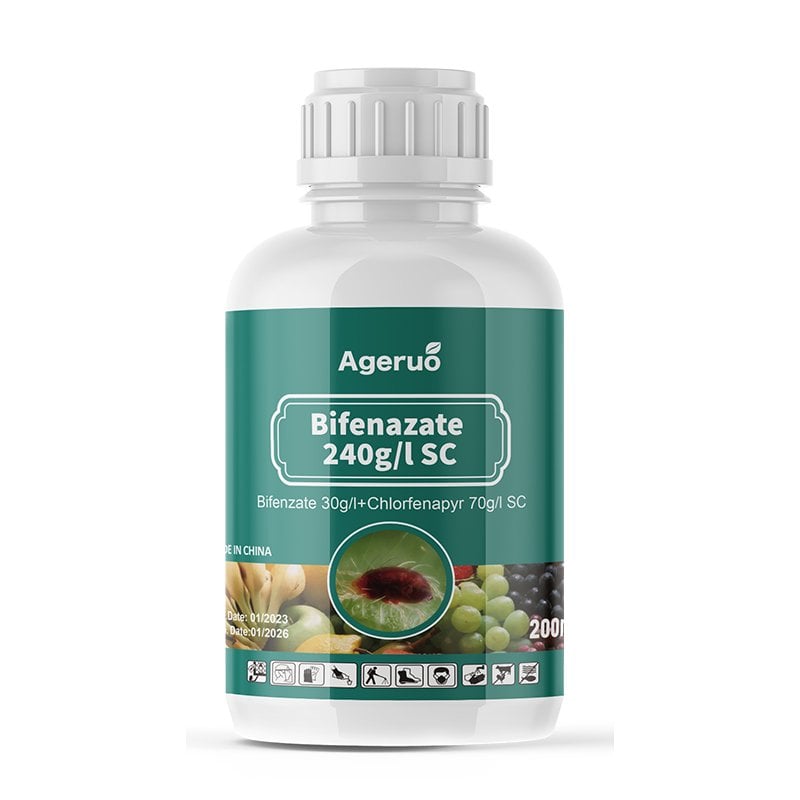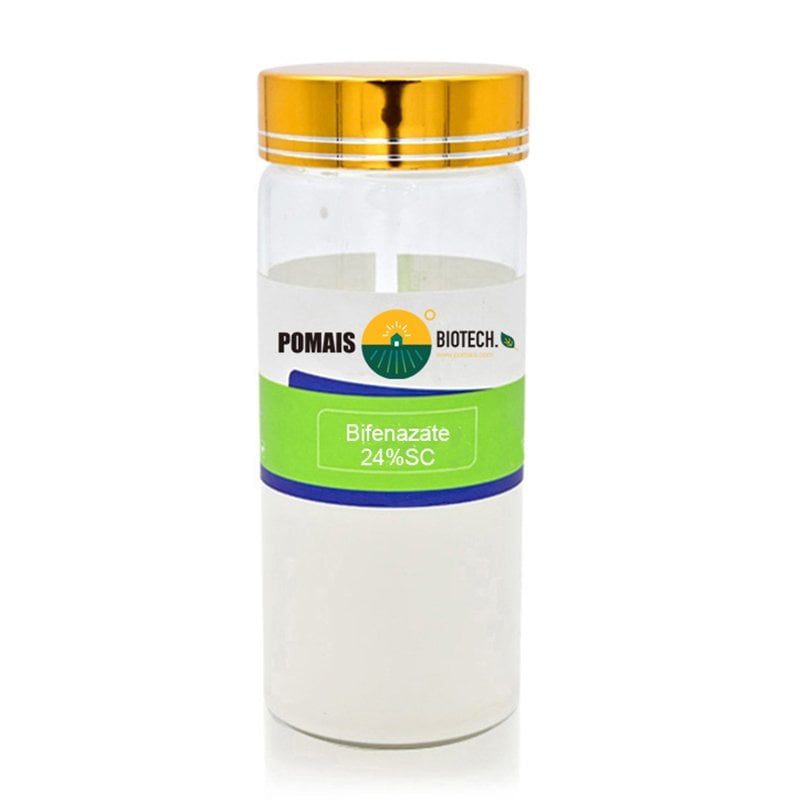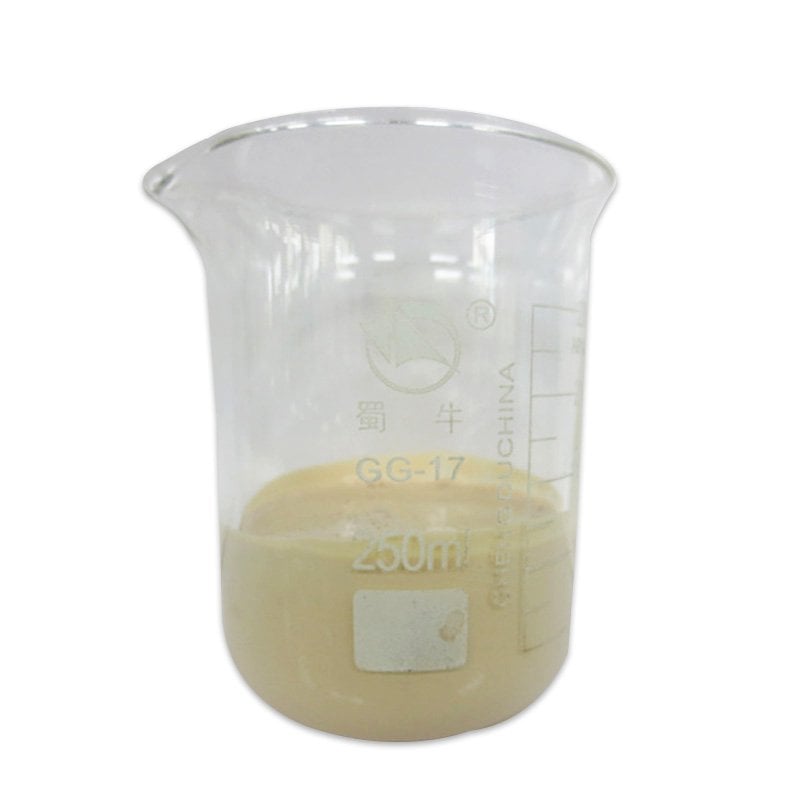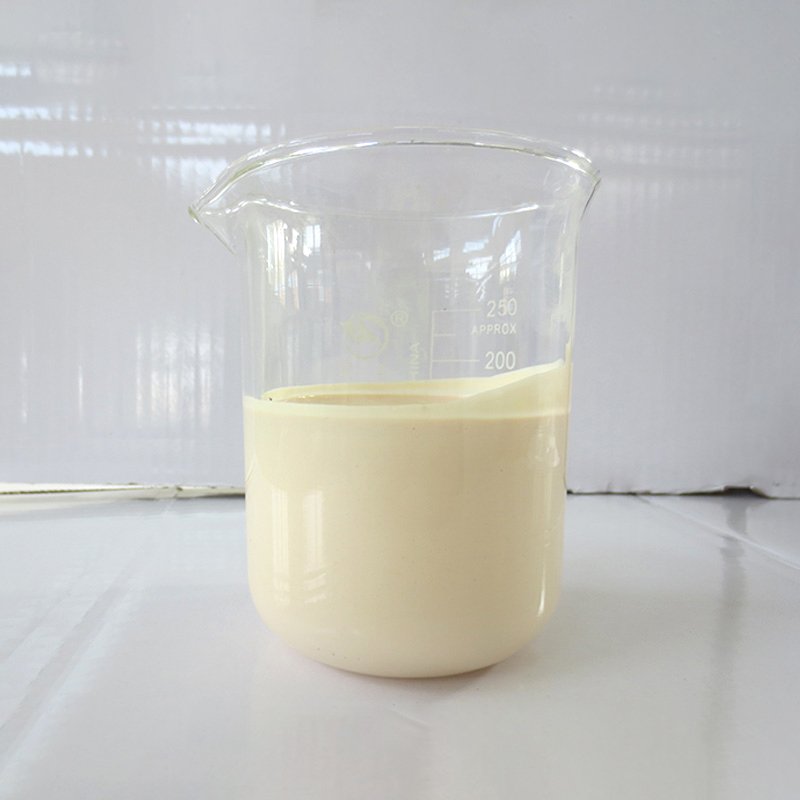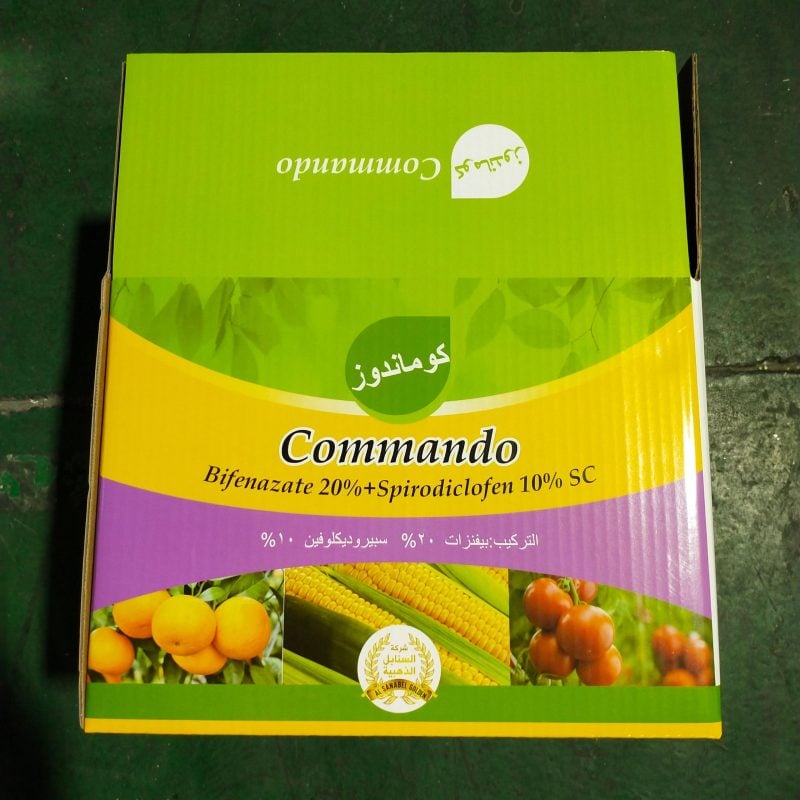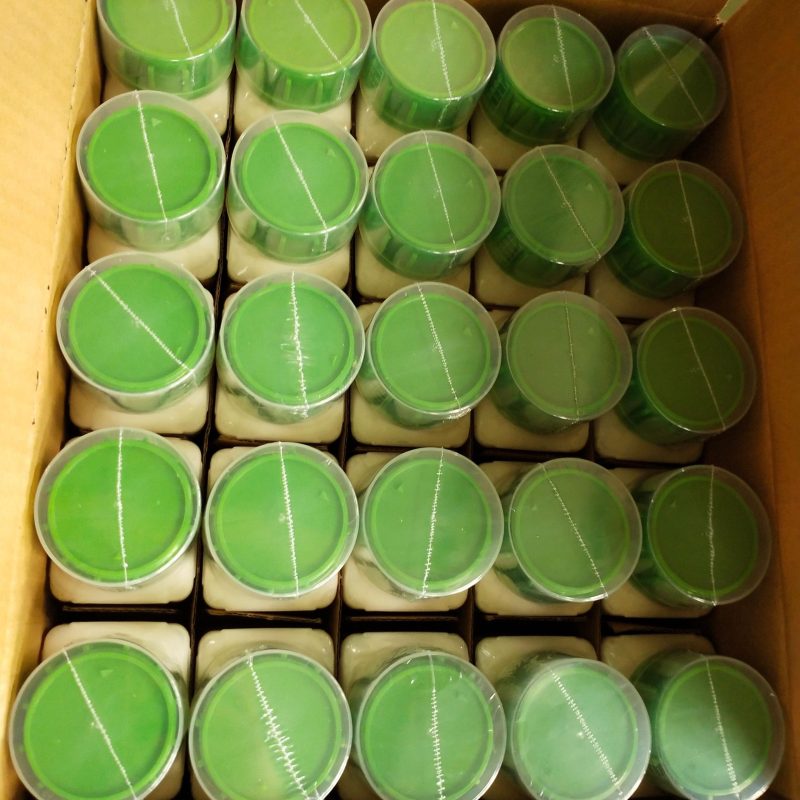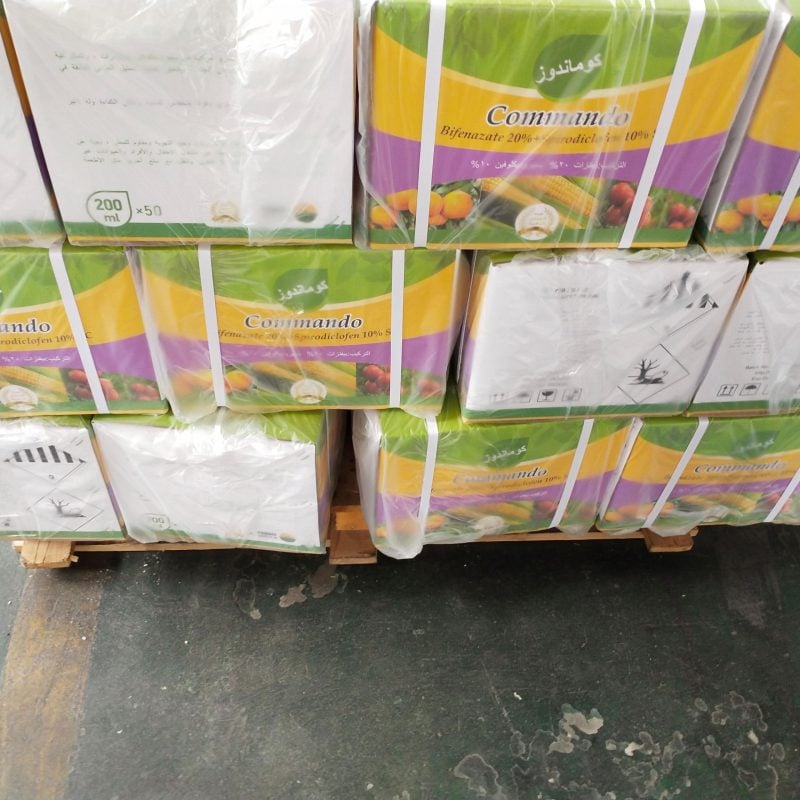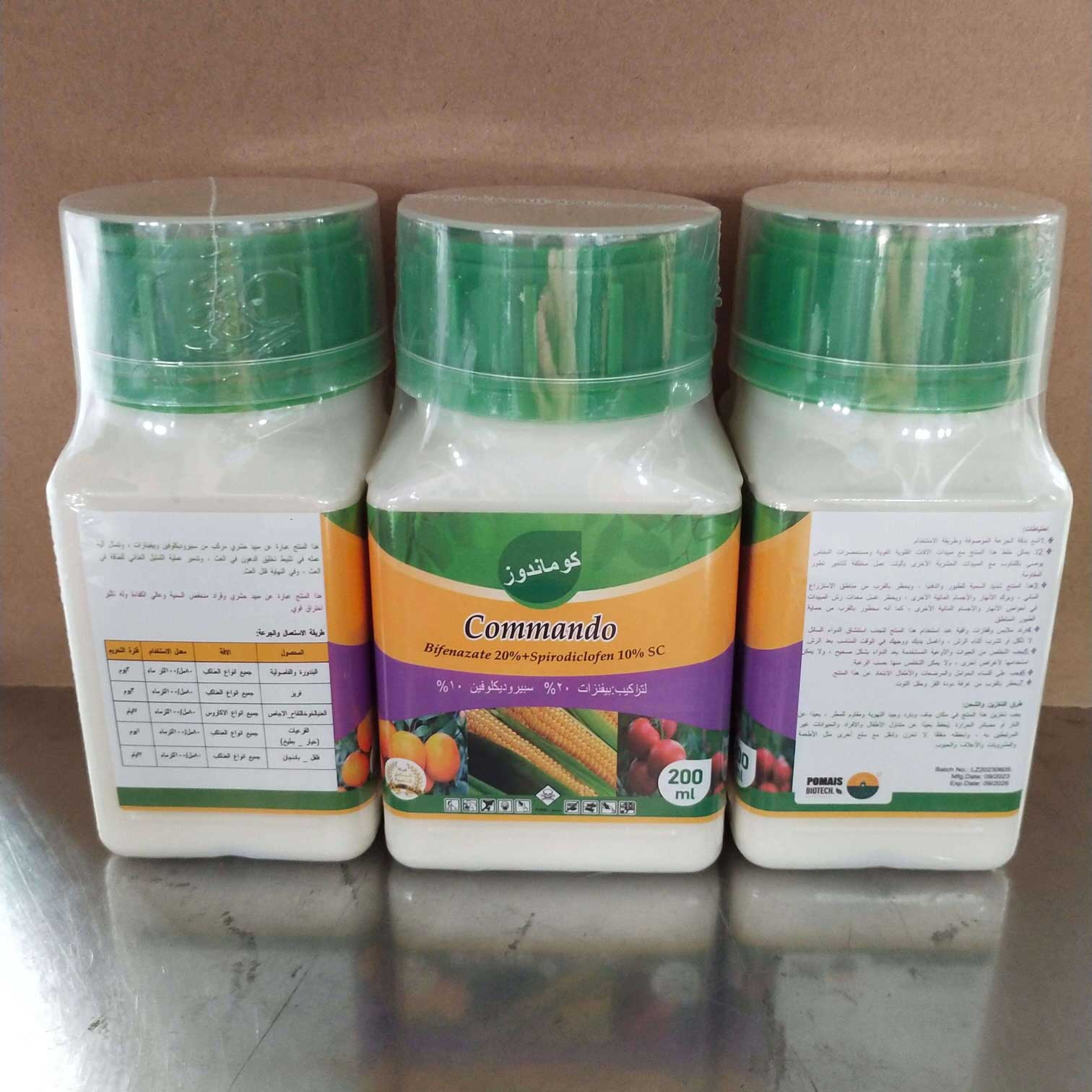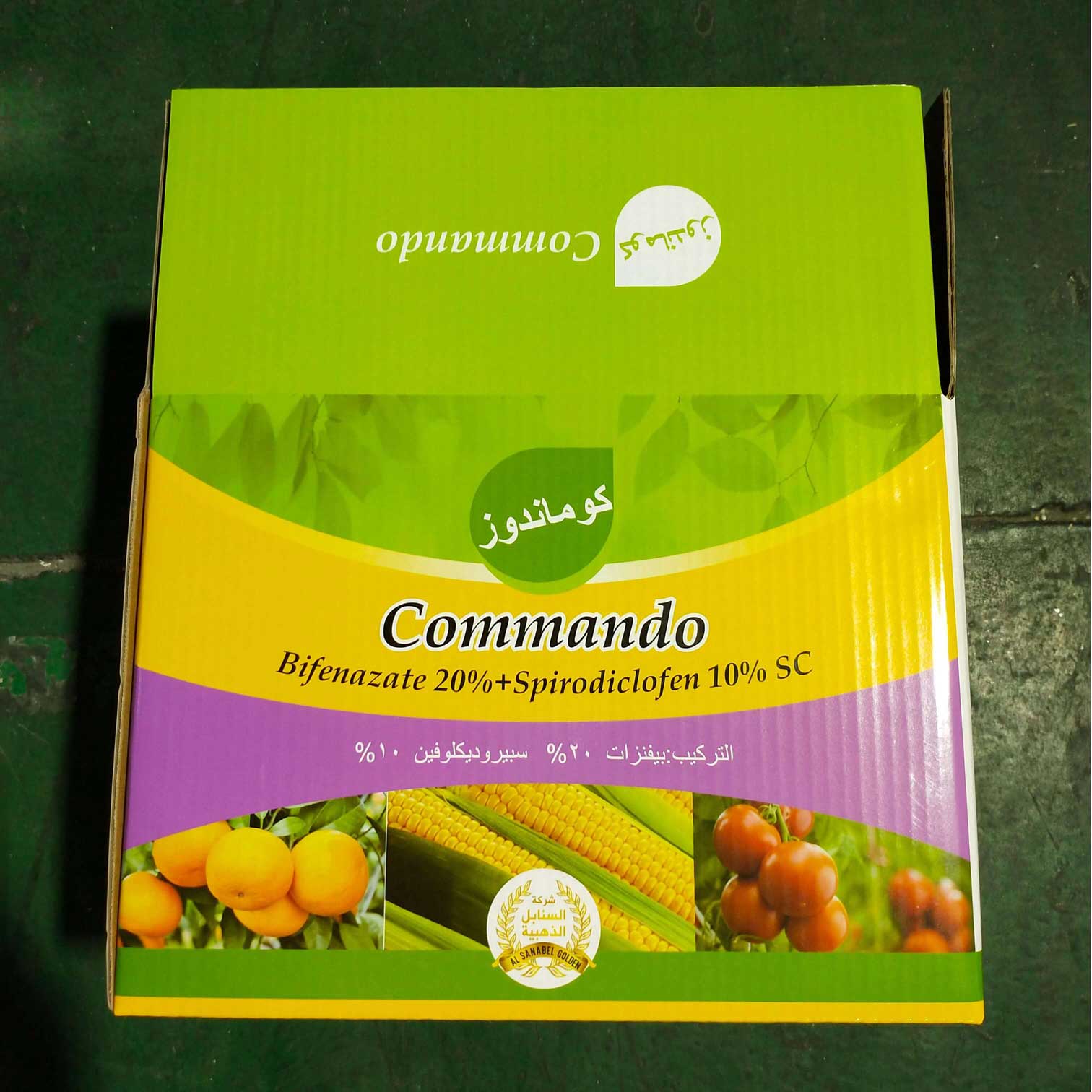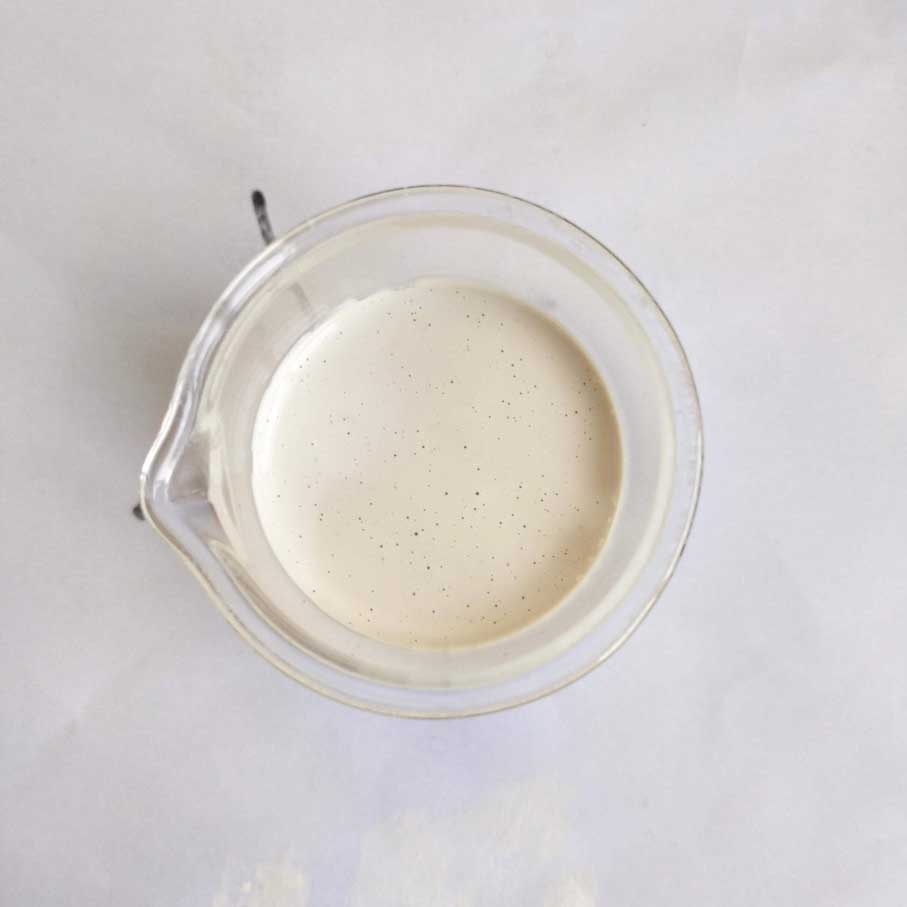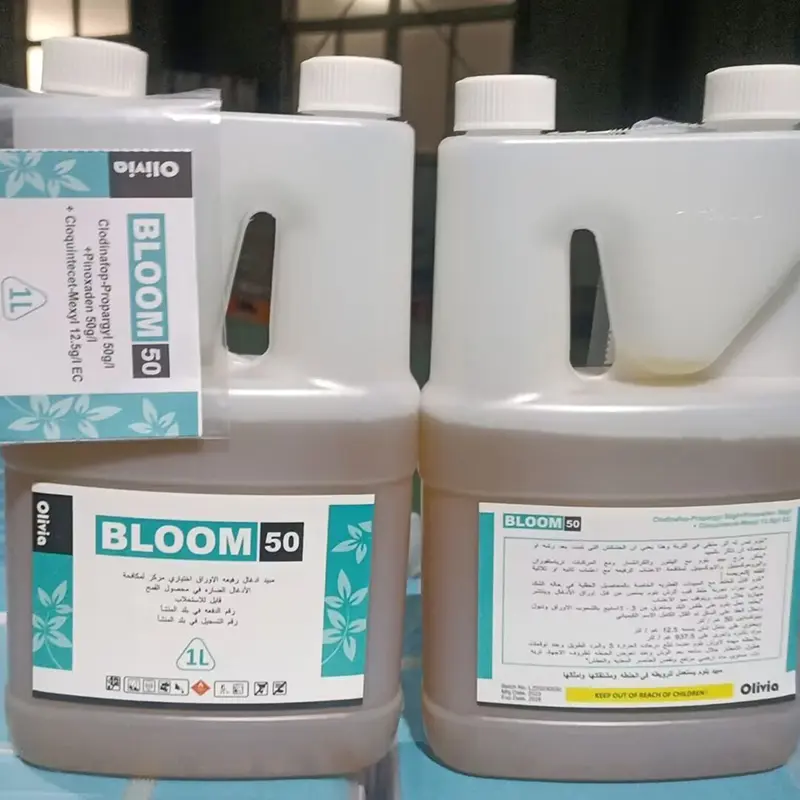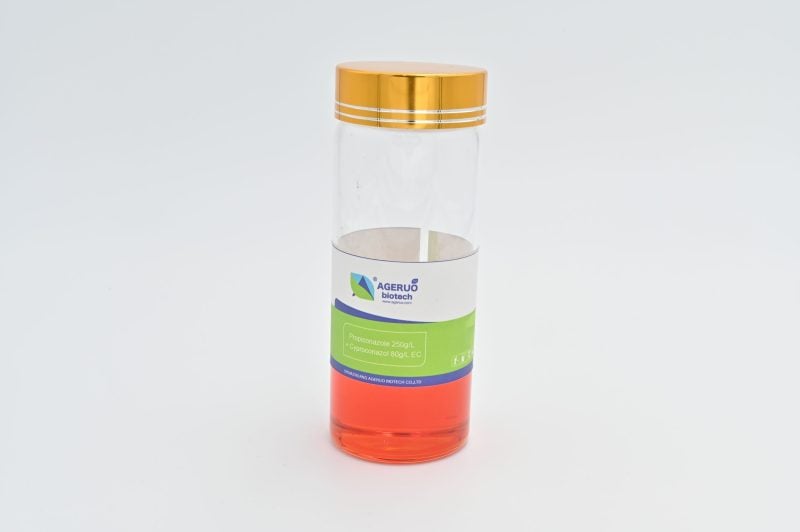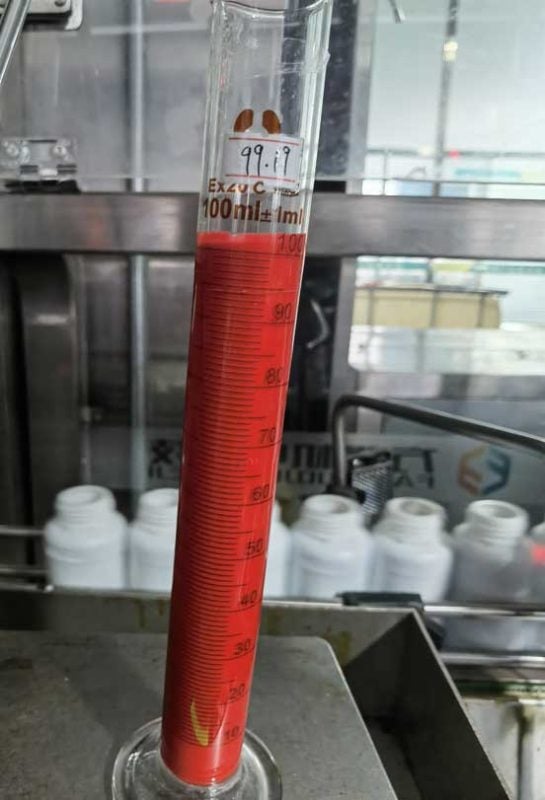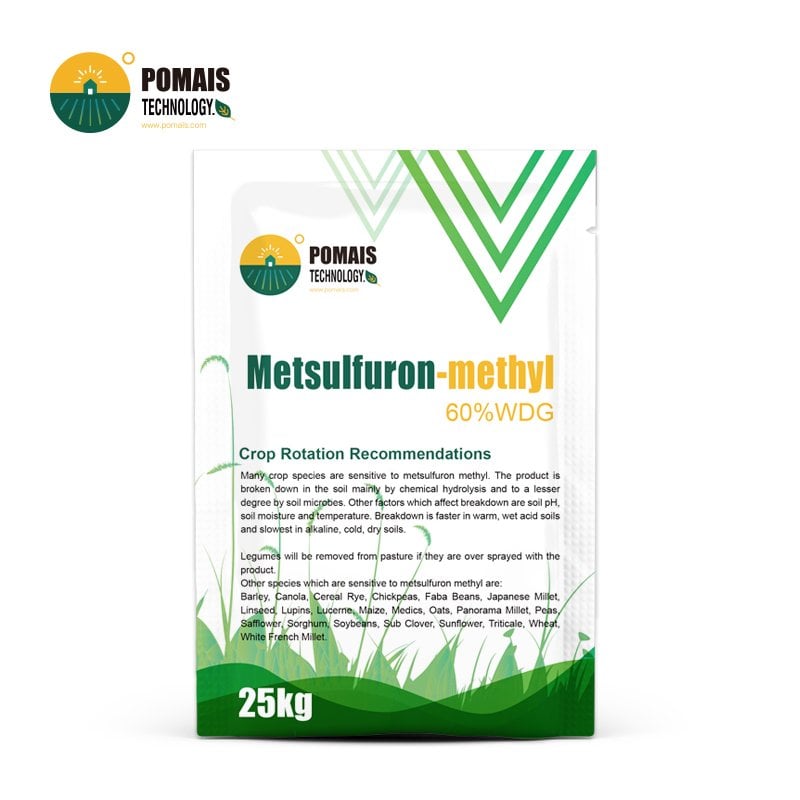Bifenazate Insecticide & Miticide
Effective Mite Control for Fruits, Vegetables & Ornamentals
If you’re looking for a reliable, selective miticide to handle stubborn spider mites while keeping your crops and beneficial insects safe, Bifenazate insecticide is the solution your growers can trust.
From Bifenazate 22.6% SC to custom blends like Bifenazate + Abamectin, our formulations deliver fast knockdown, long-lasting residual control, and flexible tank mix options — perfect for integrated pest management (IPM) programs.
Whether you’re managing apples, citrus, cucurbits, or high-value ornamentals, our Bifenazate pesticide products come with full ISO production, OEM/private label packaging, and multilingual registration support.
Keep your growers’ orchards, fields, and greenhouses clean, and keep your brand reputation strong — season after season.
- Designed for Professional Buyers & Bulk Orders
- This product is available for business purchase and large-scale distribution.
- We support custom packaging, labeling, and formulation to meet your market needs.
- Let’s build your brand together.

About Bifenazate Insecticide & Miticide
About Bifenazate Insecticide & Miticide
| Product Name | Bifenazate Insecticide & Miticide |
| Active Ingredient | Bifenazate |
| Chemical Family | Selective Acaricide (Mitochondrial Electron Transport Inhibitor, Complex III) |
| CAS Number | 149877-41-8 |
| Formulations | 22.6% SC, 24% SC, 48% SC, 50% WP, 50% WDG; combos: Bifenazate + Abamectin / Diafenthiuron / Fluazinam |
| Mode of Action | Contact activity; blocks Complex III → rapid mite paralysis & death; residual protection up to 14 days |
| Target Pests | Two-spotted spider mites, European red mites, Pacific mites, broad mites, rust mites |
| Key Crops | Citrus, apples, grapes, tomatoes, cucurbits, peppers, ornamentals, turfgrass (where registered) |
| Application Method | Foliar spray; thorough coverage of upper & lower leaf surfaces; tank mix compatible (Abamectin, Diafenthiuron) |
| Typical Dosage | 35–50 ml per 100L water depending on pest & crop |
| Benefits | Fast knockdown (48–72 hrs); breaks all mite life stages; selective & safe for beneficial insects |
| Formulation Stability | ISO-certified production; tested for AI content, particle size, storage stability |
| Packaging Options | 100 ml – 1 L retail bottles, 5–10 L farm jugs, 20–200 L drums; sealed & leak-proof |
| OEM/Private Label | Multilingual labels, custom cartons & pallet configs; COA, MSDS, full registration dossiers included |
| Value-Added Support | Application & rotation guidance, tank mix best practices, IPM compatibility, free trial samples available |
Bifenazate Insecticide & Miticide – Effective Mite Control for Fruits, Vegetables & Ornamentals
Bifenazate miticide is a new-generation, selective contact acaricide that’s trusted by growers worldwide for its fast, reliable control of spider mites. Unlike broad-spectrum pesticides that can disrupt your field’s natural balance, Bifenazate insecticide targets key mite species — like two-spotted spider mites, European red mites, and Pacific mites — while remaining low-risk for beneficial insects such as predatory mites and parasitic wasps.
Whether you need a single-active Bifenazate 22.6% SC, a higher-strength Bifenazate 48% SC, or combination products like Bifenazate + Abamectin, you’re covered with flexible solutions that adapt to local pest pressures. As a non-systemic contact miticide, Bifenazate works by disrupting the mites’ mitochondrial electron transport chain, leading to paralysis and death — and its residual activity means growers can count on up to 14 days of clean crops with fewer repeat applications.
Your buyers can confidently supply Bifenazate pesticide products for fruits, vegetables, ornamentals, and turfgrass — backed by ISO-certified production, multilingual labels, and private label packaging that keeps your brand competitive across multiple markets.
Mode of Action
So how does Bifenazate miticide do what so many other acaricides can’t? It works by targeting the mitochondrial electron transport chain in mites — specifically blocking Complex III, which is essential for energy production.
When spider mites come into direct contact with Bifenazate insecticide, this disruption shuts down their ability to generate the energy needed to grow and reproduce. The result? Rapid knockdown within 48–72 hours, plus excellent residual protection for up to two weeks under normal field conditions.
Your buyers can explain that Bifenazate pesticide products are effective across all life stages: eggs, nymphs, and adults. That means your growers don’t just get a quick fix — they break the entire mite life cycle, keeping orchards, vegetable crops, and ornamentals protected without unnecessary repeat sprays.
Because Bifenazate is a selective contact miticide, it won’t move systemically through the plant, reducing the risk of residues or unwanted effects on non-target insects. It’s a smart fit for IPM programs and resistance management plans, especially when rotated or tank mixed with other active ingredients like Abamectin or Diafenthiuron.
Target Pests & Typical Uses
When you supply Bifenazate pesticide products, you’re giving your buyers a flexible, field-tested solution that works across a wide range of crops and mite species.
Primary Target Pests
Your growers can trust Bifenazate miticide to control:
- Two-spotted spider mites (Tetranychus urticae)
- European red mites (Panonychus ulmi)
- Pacific spider mites
- Broad mites, rust mites, and other problem mites on ornamentals
Thanks to its unique mode of action, Bifenazate insecticide knocks down all mite life stages — eggs, larvae, nymphs, and adults — so you get complete control in one well-timed application.
Typical Uses & Crops
- Fruits & Orchards: Citrus trees, apples, grapes
- Vegetables: Tomatoes, cucurbits, peppers
- Ornamentals: Greenhouse and field-grown flowers, shrubs
- Turfgrass: Where registered, for controlling mite outbreaks on turf and landscape plants
Many of your buyers also combine Bifenazate with other active ingredients to broaden the pest spectrum or manage resistance. Common combos include:
- Bifenazate + Abamectin: Strong synergy for mites with different modes of action
- Bifenazate + Diafenthiuron: Added knockdown for mixed mite populations
- Bifenazate + Fluazinam: Dual action for mites and fungal issues where permitted
When your growers want fast knockdown, broad coverage, and a selective fit for IPM, Bifenazate pesticide products tick every box.
Recommended Dosage & Application
When you guide your buyers with clear dosage and application tips for Bifenazate miticide, you help them deliver consistent, safe results to growers — with less guesswork in the field.
Bifenazate insecticide is designed for foliar spray applications only. For best results, growers should:
- Apply when mites are at early life stages and populations are building — not after heavy infestations have peaked.
- Cover both upper and lower leaf surfaces thoroughly to ensure direct contact.
- Use enough water volume for full canopy penetration, especially in orchards or dense ornamental crops.
- Always respect pre-harvest intervals and local bula label instructions.
Many growers prefer to tank mix Bifenazate pesticide products with other miticides or insecticides like Bifenazate + Abamectin for broader control and resistance management — but it’s smart to run a jar test first to check compatibility.
Example Dosage Guide
| Crop | Target Pests | Formulation | Dosage | Application Method |
|---|---|---|---|---|
| Citrus fruits | Red spider mites, two-spotted spider mites | 48% SC | 35–40 ml/100L water | Foliar spray, thorough coverage |
| Apples | European red mites, spider mites | 48% SC | 35 ml/100L water | Foliar spray |
| Tomatoes | Red spider mites | 48% SC | 40 ml/100L water | Foliar spray |
| Cucurbits | Two-spotted spider mites | 48% SC | 40 ml/100L water | Foliar spray |
| Ornamentals | Broad mites, rust mites | 24–48% SC | 35–50 ml/100L water | Foliar spray, full leaf contact |
Always remind your buyers to rotate Bifenazate with miticides of different modes of action and avoid consecutive treatments to slow resistance development.
By providing simple, practical application guidance, you strengthen trust in your Bifenazate pesticide products and help your buyers keep growers’ crops cleaner, healthier, and more profitable.
Benefits & Grower Value
When you add Bifenazate miticide to your product lineup, you’re offering your buyers a proven, easy-to-sell solution that checks all the boxes for modern mite control.
Unlike older, broad-spectrum pesticides, Bifenazate insecticide is highly selective — hitting spider mites hard while leaving beneficial insects like predatory mites and parasitic wasps unharmed. This means your growers don’t just get clean crops now; they maintain a balanced ecosystem that naturally keeps future mite outbreaks under control.
Another big win? Speed. Bifenazate pesticide products provide a rapid knockdown effect within 48–72 hours, plus residual protection that lasts up to 14 days. Fewer sprays, less labor — and lower input costs for your growers.
Because Bifenazate works on all mite life stages, from eggs to adults, your buyers can show growers how to break the entire mite cycle in one pass, avoiding multiple re-sprays and costly rescue treatments. This makes it a smart fit for IPM programs and resistance management, especially when paired with actives like Abamectin in rotation.
The result? More predictable yields, healthier crops, and stronger brand loyalty season after season.
Key Grower Value Points:
- Highly selective, safer for natural enemies and pollinators.
- Strong egg-killing and knockdown action.
- Long residual means fewer passes through the field.
- Flexible for fruits, vegetables, ornamentals, and turf.
- Adds value to tank mix programs and helps prevent resistance.
When your buyers see these benefits in action, they know they’re delivering a professional solution that works — not just another commodity miticide.
Formulation Stability & Packaging Options
When you ship Bifenazate pesticide products, you want your buyers to feel confident that every batch performs exactly as promised — from your warehouse to the orchard, greenhouse, or field.
Our Bifenazate miticide is produced under strict ISO-certified standards, ensuring that each formulation delivers consistent active content, optimal particle size, and excellent suspension properties. This means your growers get smooth mixing in the tank, stable performance in storage, and reliable knockdown of spider mites in real-world conditions.
You can offer your buyers a variety of formulations to match their market needs:
- Single-active options: Bifenazate 22.6% SC, 24% SC, 48% SC, 50% WP, 50% WDG
- Combination blends: Popular combinations include Bifenazate + Abamectin, Bifenazate + Diafenthiuron, or Bifenazate + Fluazinam — giving you more ways to stand out with flexible pest control programs.
To make your brand more competitive, we support full OEM and private label packaging. Whether your buyers need retail-friendly bottles or bulk drums for large-scale applications, we provide:
- Small retail packs: 100 ml, 250 ml, 500 ml, 1 L
- Farm-size jugs: 5 L, 10 L
- Industrial drums: 20 L, 200 L
- Multilingual labels, custom cartons, and pallet configurations
With every shipment, you also get COA, MSDS, and full registration support — so you can open new markets with confidence.
When you supply Bifenazate insecticide, you’re not just selling a miticide — you’re delivering a stable, market-ready product that makes you a trusted partner for your buyers, season after season.
Tank Mix Compatibility & Resistance Management
When you supply Bifenazate pesticide products, you’re giving your buyers a miticide that’s easy to integrate into broader pest management programs — and that means better long-term control and happier growers.
Bifenazate miticide is well-known for its strong compatibility with other insecticides and miticides, making it a solid backbone for tank mixes that hit multiple pest types at once. Popular combinations include:
- Bifenazate + Abamectin: For improved residual control and different modes of action.
- Bifenazate + Diafenthiuron: Added knockdown for heavy mite populations.
- Bifenazate + Fluazinam: Dual-action control for mite infestations and certain fungal diseases (where approved).
Your buyers should always remind growers to:
- Perform a small jar test before mixing new products together — no one wants tank surprises.
- Follow local bula label rates for each active ingredient in the mix.
- Use good spray coverage to get full leaf contact, especially when targeting hard-to-reach mite colonies under leaves.
Because Bifenazate insecticide targets the mitochondrial electron transport chain, it’s smart practice to rotate with other miticide groups or multi-site products to slow down resistance development.
Encouraging growers to use Bifenazate at recommended rates and avoid consecutive applications helps keep its performance strong for the long term.
When you provide practical tank mix and resistance advice along with your Bifenazate products, you help your buyers deliver results growers can see — and you build trust that keeps them coming back.
Safety Measures & Environmental Impact
When you supply Bifenazate miticide, you also help your buyers support safe, responsible pest control that keeps both people and local ecosystems protected.
Bifenazate insecticide is a non-systemic, selective contact miticide, which means it stays where it’s applied — minimizing drift and off-target impact when used correctly. Its low toxicity to beneficial insects like predatory mites and lacewings makes it an excellent fit for integrated pest management (IPM) programs that aim to balance control with natural enemies.
For growers, a few practical reminders go a long way:
- Always wear proper PPE when mixing and applying: chemical-resistant gloves, long sleeves, goggles, and a respirator if handling larger tanks.
- Use calibrated sprayers to ensure even coverage and avoid run-off.
- Avoid spraying during windy conditions or just before heavy rainfall to reduce drift and wash-off.
- Respect local buffer zones, especially near water bodies or protected habitats.
When storing Bifenazate pesticide products, buyers should keep them sealed in a cool, dry place away from food and feed. Empty containers should be triple-rinsed, punctured, and disposed of according to local agrochemical waste regulations — never dumped into waterways.
By giving your buyers these clear safety and environmental pointers, you help them keep growers compliant and your brand reputation strong in the market.
Field Use Scenarios
When you share real-world examples of Bifenazate miticide, you make it easier for your buyers to explain why it’s a reliable solution for all kinds of mite problems — from high-value orchards to ornamentals in greenhouses.
Scenario 1: Citrus Orchard – Two-Spotted Spider Mites
A citrus grower notices early signs of spider mite outbreaks on the undersides of leaves. They apply Bifenazate 48% SC at 35 ml/100L water, ensuring full leaf coverage.
Result: Mites are knocked down within 48–72 hours, and residual protection holds for up to two weeks — fewer rescue sprays needed, and the orchard stays clean during peak fruit development.
Scenario 2: Apple Farm – European Red Mites
In an apple orchard facing a high-pressure mite season, a distributor recommends Bifenazate + Abamectin to broaden control and slow resistance.
Result: The combination tackles eggs, nymphs, and adults in one pass. Beneficial predatory mites survive, supporting long-term IPM goals.
Scenario 3: Greenhouse Ornamentals – Broad Mites & Rust Mites
A flower grower uses Bifenazate insecticide on roses and ornamental shrubs that are sensitive to broad mites. Foliar sprays target the entire canopy.
Result: Fast knockdown with minimal visible residue on leaves — an important selling point for flowers and nursery crops.
Scenario 4: Cucurbit Field – Spot Treatment for Spider Mites
A vegetable grower applies Bifenazate pesticide products in localized areas where spider mites appear.
Result: Mite colonies collapse quickly, reducing the spread to other rows. Growers avoid costly blanket sprays and preserve beneficial insects.
By giving your buyers clear scenarios like these, you help them position Bifenazate miticide as a practical, selective tool that works across diverse crops — and you build trust that keeps your customers returning season after season.
FAQ – Common Questions
Q1: What makes Bifenazate different from other miticides?
Bifenazate miticide is highly selective — it knocks down spider mites fast while sparing beneficial insects like predatory mites and lacewings. Its unique mode of action targets the mites’ energy system, so you get strong egg-killing and adult control in one pass.
Q2: Which crops can I use Bifenazate on?
Your buyers can confidently offer Bifenazate pesticide products for citrus, apples, grapes, tomatoes, cucurbits, ornamentals, and even turfgrass in some markets. Always follow local bula and registration guidelines.
Q3: How long does Bifenazate last in the field?
Growers see residual protection for about 10–14 days, depending on conditions. That means fewer repeat sprays and lower labor costs.
Q4: Can Bifenazate be tank mixed with other products?
Absolutely. It pairs well with Abamectin, Diafenthiuron, and other actives to broaden the spectrum and help manage resistance. Just run a jar test first to check compatibility.
Q5: Do you support OEM or private label?
Yes! We produce Bifenazate insecticide under strict ISO standards and support full OEM/private label services — multilingual labels, custom packs, and complete COA/MSDS support for your local registrations.
Why Choose POMAIS
When you choose POMAIS, you’re choosing consistent quality, stable formulations, and a team that understands the real-world demands of modern pest control.
From Bifenazate 22.6% SC to custom combinations like Bifenazate + Abamectin, we help you deliver results your buyers will trust — orchard after orchard, season after season.
Ready to secure your next shipment or request a sample?
Get in touch with our team today — let’s grow your brand and your customers’ peace of mind, together.
| Product Name | Bifenazate Insecticide & Miticide |
| Active Ingredient | Bifenazate |
| Chemical Family | Selective Acaricide (Mitochondrial Electron Transport Inhibitor, Complex III) |
| CAS Number | 149877-41-8 |
| Formulations | 22.6% SC, 24% SC, 48% SC, 50% WP, 50% WDG; combos: Bifenazate + Abamectin / Diafenthiuron / Fluazinam |
| Mode of Action | Contact activity; blocks Complex III → rapid mite paralysis & death; residual protection up to 14 days |
| Target Pests | Two-spotted spider mites, European red mites, Pacific mites, broad mites, rust mites |
| Key Crops | Citrus, apples, grapes, tomatoes, cucurbits, peppers, ornamentals, turfgrass (where registered) |
| Application Method | Foliar spray; thorough coverage of upper & lower leaf surfaces; tank mix compatible (Abamectin, Diafenthiuron) |
| Typical Dosage | 35–50 ml per 100L water depending on pest & crop |
| Benefits | Fast knockdown (48–72 hrs); breaks all mite life stages; selective & safe for beneficial insects |
| Formulation Stability | ISO-certified production; tested for AI content, particle size, storage stability |
| Packaging Options | 100 ml – 1 L retail bottles, 5–10 L farm jugs, 20–200 L drums; sealed & leak-proof |
| OEM/Private Label | Multilingual labels, custom cartons & pallet configs; COA, MSDS, full registration dossiers included |
| Value-Added Support | Application & rotation guidance, tank mix best practices, IPM compatibility, free trial samples available |
Bifenazate Insecticide & Miticide – Effective Mite Control for Fruits, Vegetables & Ornamentals
Bifenazate miticide is a new-generation, selective contact acaricide that’s trusted by growers worldwide for its fast, reliable control of spider mites. Unlike broad-spectrum pesticides that can disrupt your field’s natural balance, Bifenazate insecticide targets key mite species — like two-spotted spider mites, European red mites, and Pacific mites — while remaining low-risk for beneficial insects such as predatory mites and parasitic wasps.
Whether you need a single-active Bifenazate 22.6% SC, a higher-strength Bifenazate 48% SC, or combination products like Bifenazate + Abamectin, you’re covered with flexible solutions that adapt to local pest pressures. As a non-systemic contact miticide, Bifenazate works by disrupting the mites’ mitochondrial electron transport chain, leading to paralysis and death — and its residual activity means growers can count on up to 14 days of clean crops with fewer repeat applications.
Your buyers can confidently supply Bifenazate pesticide products for fruits, vegetables, ornamentals, and turfgrass — backed by ISO-certified production, multilingual labels, and private label packaging that keeps your brand competitive across multiple markets.
Mode of Action
So how does Bifenazate miticide do what so many other acaricides can’t? It works by targeting the mitochondrial electron transport chain in mites — specifically blocking Complex III, which is essential for energy production.
When spider mites come into direct contact with Bifenazate insecticide, this disruption shuts down their ability to generate the energy needed to grow and reproduce. The result? Rapid knockdown within 48–72 hours, plus excellent residual protection for up to two weeks under normal field conditions.
Your buyers can explain that Bifenazate pesticide products are effective across all life stages: eggs, nymphs, and adults. That means your growers don’t just get a quick fix — they break the entire mite life cycle, keeping orchards, vegetable crops, and ornamentals protected without unnecessary repeat sprays.
Because Bifenazate is a selective contact miticide, it won’t move systemically through the plant, reducing the risk of residues or unwanted effects on non-target insects. It’s a smart fit for IPM programs and resistance management plans, especially when rotated or tank mixed with other active ingredients like Abamectin or Diafenthiuron.
Target Pests & Typical Uses
When you supply Bifenazate pesticide products, you’re giving your buyers a flexible, field-tested solution that works across a wide range of crops and mite species.
Primary Target Pests
Your growers can trust Bifenazate miticide to control:
- Two-spotted spider mites (Tetranychus urticae)
- European red mites (Panonychus ulmi)
- Pacific spider mites
- Broad mites, rust mites, and other problem mites on ornamentals
Thanks to its unique mode of action, Bifenazate insecticide knocks down all mite life stages — eggs, larvae, nymphs, and adults — so you get complete control in one well-timed application.
Typical Uses & Crops
- Fruits & Orchards: Citrus trees, apples, grapes
- Vegetables: Tomatoes, cucurbits, peppers
- Ornamentals: Greenhouse and field-grown flowers, shrubs
- Turfgrass: Where registered, for controlling mite outbreaks on turf and landscape plants
Many of your buyers also combine Bifenazate with other active ingredients to broaden the pest spectrum or manage resistance. Common combos include:
- Bifenazate + Abamectin: Strong synergy for mites with different modes of action
- Bifenazate + Diafenthiuron: Added knockdown for mixed mite populations
- Bifenazate + Fluazinam: Dual action for mites and fungal issues where permitted
When your growers want fast knockdown, broad coverage, and a selective fit for IPM, Bifenazate pesticide products tick every box.
Recommended Dosage & Application
When you guide your buyers with clear dosage and application tips for Bifenazate miticide, you help them deliver consistent, safe results to growers — with less guesswork in the field.
Bifenazate insecticide is designed for foliar spray applications only. For best results, growers should:
- Apply when mites are at early life stages and populations are building — not after heavy infestations have peaked.
- Cover both upper and lower leaf surfaces thoroughly to ensure direct contact.
- Use enough water volume for full canopy penetration, especially in orchards or dense ornamental crops.
- Always respect pre-harvest intervals and local bula label instructions.
Many growers prefer to tank mix Bifenazate pesticide products with other miticides or insecticides like Bifenazate + Abamectin for broader control and resistance management — but it’s smart to run a jar test first to check compatibility.
Example Dosage Guide
| Crop | Target Pests | Formulation | Dosage | Application Method |
|---|---|---|---|---|
| Citrus fruits | Red spider mites, two-spotted spider mites | 48% SC | 35–40 ml/100L water | Foliar spray, thorough coverage |
| Apples | European red mites, spider mites | 48% SC | 35 ml/100L water | Foliar spray |
| Tomatoes | Red spider mites | 48% SC | 40 ml/100L water | Foliar spray |
| Cucurbits | Two-spotted spider mites | 48% SC | 40 ml/100L water | Foliar spray |
| Ornamentals | Broad mites, rust mites | 24–48% SC | 35–50 ml/100L water | Foliar spray, full leaf contact |
Always remind your buyers to rotate Bifenazate with miticides of different modes of action and avoid consecutive treatments to slow resistance development.
By providing simple, practical application guidance, you strengthen trust in your Bifenazate pesticide products and help your buyers keep growers’ crops cleaner, healthier, and more profitable.
Benefits & Grower Value
When you add Bifenazate miticide to your product lineup, you’re offering your buyers a proven, easy-to-sell solution that checks all the boxes for modern mite control.
Unlike older, broad-spectrum pesticides, Bifenazate insecticide is highly selective — hitting spider mites hard while leaving beneficial insects like predatory mites and parasitic wasps unharmed. This means your growers don’t just get clean crops now; they maintain a balanced ecosystem that naturally keeps future mite outbreaks under control.
Another big win? Speed. Bifenazate pesticide products provide a rapid knockdown effect within 48–72 hours, plus residual protection that lasts up to 14 days. Fewer sprays, less labor — and lower input costs for your growers.
Because Bifenazate works on all mite life stages, from eggs to adults, your buyers can show growers how to break the entire mite cycle in one pass, avoiding multiple re-sprays and costly rescue treatments. This makes it a smart fit for IPM programs and resistance management, especially when paired with actives like Abamectin in rotation.
The result? More predictable yields, healthier crops, and stronger brand loyalty season after season.
Key Grower Value Points:
- Highly selective, safer for natural enemies and pollinators.
- Strong egg-killing and knockdown action.
- Long residual means fewer passes through the field.
- Flexible for fruits, vegetables, ornamentals, and turf.
- Adds value to tank mix programs and helps prevent resistance.
When your buyers see these benefits in action, they know they’re delivering a professional solution that works — not just another commodity miticide.
Formulation Stability & Packaging Options
When you ship Bifenazate pesticide products, you want your buyers to feel confident that every batch performs exactly as promised — from your warehouse to the orchard, greenhouse, or field.
Our Bifenazate miticide is produced under strict ISO-certified standards, ensuring that each formulation delivers consistent active content, optimal particle size, and excellent suspension properties. This means your growers get smooth mixing in the tank, stable performance in storage, and reliable knockdown of spider mites in real-world conditions.
You can offer your buyers a variety of formulations to match their market needs:
- Single-active options: Bifenazate 22.6% SC, 24% SC, 48% SC, 50% WP, 50% WDG
- Combination blends: Popular combinations include Bifenazate + Abamectin, Bifenazate + Diafenthiuron, or Bifenazate + Fluazinam — giving you more ways to stand out with flexible pest control programs.
To make your brand more competitive, we support full OEM and private label packaging. Whether your buyers need retail-friendly bottles or bulk drums for large-scale applications, we provide:
- Small retail packs: 100 ml, 250 ml, 500 ml, 1 L
- Farm-size jugs: 5 L, 10 L
- Industrial drums: 20 L, 200 L
- Multilingual labels, custom cartons, and pallet configurations
With every shipment, you also get COA, MSDS, and full registration support — so you can open new markets with confidence.
When you supply Bifenazate insecticide, you’re not just selling a miticide — you’re delivering a stable, market-ready product that makes you a trusted partner for your buyers, season after season.
Tank Mix Compatibility & Resistance Management
When you supply Bifenazate pesticide products, you’re giving your buyers a miticide that’s easy to integrate into broader pest management programs — and that means better long-term control and happier growers.
Bifenazate miticide is well-known for its strong compatibility with other insecticides and miticides, making it a solid backbone for tank mixes that hit multiple pest types at once. Popular combinations include:
- Bifenazate + Abamectin: For improved residual control and different modes of action.
- Bifenazate + Diafenthiuron: Added knockdown for heavy mite populations.
- Bifenazate + Fluazinam: Dual-action control for mite infestations and certain fungal diseases (where approved).
Your buyers should always remind growers to:
- Perform a small jar test before mixing new products together — no one wants tank surprises.
- Follow local bula label rates for each active ingredient in the mix.
- Use good spray coverage to get full leaf contact, especially when targeting hard-to-reach mite colonies under leaves.
Because Bifenazate insecticide targets the mitochondrial electron transport chain, it’s smart practice to rotate with other miticide groups or multi-site products to slow down resistance development.
Encouraging growers to use Bifenazate at recommended rates and avoid consecutive applications helps keep its performance strong for the long term.
When you provide practical tank mix and resistance advice along with your Bifenazate products, you help your buyers deliver results growers can see — and you build trust that keeps them coming back.
Safety Measures & Environmental Impact
When you supply Bifenazate miticide, you also help your buyers support safe, responsible pest control that keeps both people and local ecosystems protected.
Bifenazate insecticide is a non-systemic, selective contact miticide, which means it stays where it’s applied — minimizing drift and off-target impact when used correctly. Its low toxicity to beneficial insects like predatory mites and lacewings makes it an excellent fit for integrated pest management (IPM) programs that aim to balance control with natural enemies.
For growers, a few practical reminders go a long way:
- Always wear proper PPE when mixing and applying: chemical-resistant gloves, long sleeves, goggles, and a respirator if handling larger tanks.
- Use calibrated sprayers to ensure even coverage and avoid run-off.
- Avoid spraying during windy conditions or just before heavy rainfall to reduce drift and wash-off.
- Respect local buffer zones, especially near water bodies or protected habitats.
When storing Bifenazate pesticide products, buyers should keep them sealed in a cool, dry place away from food and feed. Empty containers should be triple-rinsed, punctured, and disposed of according to local agrochemical waste regulations — never dumped into waterways.
By giving your buyers these clear safety and environmental pointers, you help them keep growers compliant and your brand reputation strong in the market.
Field Use Scenarios
When you share real-world examples of Bifenazate miticide, you make it easier for your buyers to explain why it’s a reliable solution for all kinds of mite problems — from high-value orchards to ornamentals in greenhouses.
Scenario 1: Citrus Orchard – Two-Spotted Spider Mites
A citrus grower notices early signs of spider mite outbreaks on the undersides of leaves. They apply Bifenazate 48% SC at 35 ml/100L water, ensuring full leaf coverage.
Result: Mites are knocked down within 48–72 hours, and residual protection holds for up to two weeks — fewer rescue sprays needed, and the orchard stays clean during peak fruit development.
Scenario 2: Apple Farm – European Red Mites
In an apple orchard facing a high-pressure mite season, a distributor recommends Bifenazate + Abamectin to broaden control and slow resistance.
Result: The combination tackles eggs, nymphs, and adults in one pass. Beneficial predatory mites survive, supporting long-term IPM goals.
Scenario 3: Greenhouse Ornamentals – Broad Mites & Rust Mites
A flower grower uses Bifenazate insecticide on roses and ornamental shrubs that are sensitive to broad mites. Foliar sprays target the entire canopy.
Result: Fast knockdown with minimal visible residue on leaves — an important selling point for flowers and nursery crops.
Scenario 4: Cucurbit Field – Spot Treatment for Spider Mites
A vegetable grower applies Bifenazate pesticide products in localized areas where spider mites appear.
Result: Mite colonies collapse quickly, reducing the spread to other rows. Growers avoid costly blanket sprays and preserve beneficial insects.
By giving your buyers clear scenarios like these, you help them position Bifenazate miticide as a practical, selective tool that works across diverse crops — and you build trust that keeps your customers returning season after season.
FAQ – Common Questions
Q1: What makes Bifenazate different from other miticides?
Bifenazate miticide is highly selective — it knocks down spider mites fast while sparing beneficial insects like predatory mites and lacewings. Its unique mode of action targets the mites’ energy system, so you get strong egg-killing and adult control in one pass.
Q2: Which crops can I use Bifenazate on?
Your buyers can confidently offer Bifenazate pesticide products for citrus, apples, grapes, tomatoes, cucurbits, ornamentals, and even turfgrass in some markets. Always follow local bula and registration guidelines.
Q3: How long does Bifenazate last in the field?
Growers see residual protection for about 10–14 days, depending on conditions. That means fewer repeat sprays and lower labor costs.
Q4: Can Bifenazate be tank mixed with other products?
Absolutely. It pairs well with Abamectin, Diafenthiuron, and other actives to broaden the spectrum and help manage resistance. Just run a jar test first to check compatibility.
Q5: Do you support OEM or private label?
Yes! We produce Bifenazate insecticide under strict ISO standards and support full OEM/private label services — multilingual labels, custom packs, and complete COA/MSDS support for your local registrations.
Why Choose POMAIS
When you choose POMAIS, you’re choosing consistent quality, stable formulations, and a team that understands the real-world demands of modern pest control.
From Bifenazate 22.6% SC to custom combinations like Bifenazate + Abamectin, we help you deliver results your buyers will trust — orchard after orchard, season after season.
Ready to secure your next shipment or request a sample?
Get in touch with our team today — let’s grow your brand and your customers’ peace of mind, together.
Related Products
Latest News

